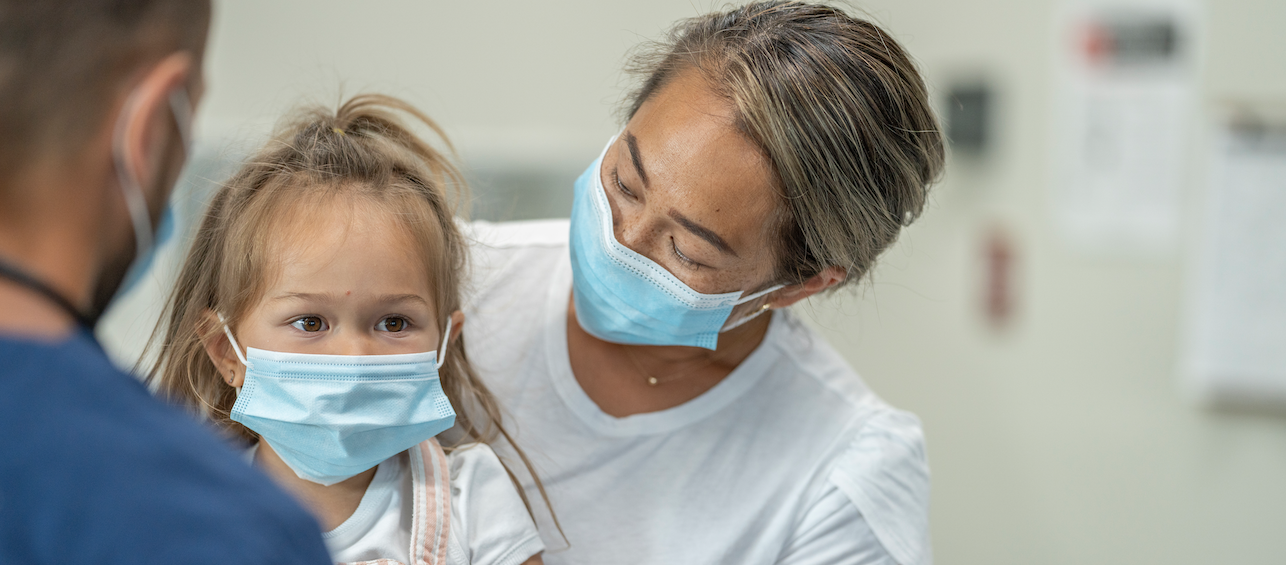Penicillin allergy is reported by 32 million Americans, or about 1 in 10 people. However, most of them are not actually allergic. If you’ve been told your child may have a penicillin allergy, simple allergy testing can show if they are truly allergic.
As it turns out, more than 95% of children with a penicillin allergy listed in their medical chart are found not to be allergic after going through allergy testing.
When a penicillin allergy is listed in someone’s medical chart, it is called an “allergy label.” If a medication allergy is suspected and added to the chart, this is an “unverified” allergy label, as it hasn’t yet been evaluated with allergy testing.
HOW UNVERIFIED PENICILLIN ALLERGY LABELS HAPPEN
Allergy to penicillin is the most commonly reported medication allergy. Amoxicillin (Augmentin) is an antibiotic in the penicillin family that is often prescribed because it can treat many childhood infections.
Up to 10% of all patients (and 15% of hospitalized patients) report some type of penicillin allergy after experiencing a head-to-toe rash during childhood. As a result, the amoxicillin-associated rash is often labeled in the child’s medical chart as an allergy, and in most cases is never again re-evaluated.
WHAT AN UNVERIFIED PENICILLIN ALLERGY MEANS FOR YOUR CHILD
When someone has a penicillin allergy label in their medical chart, healthcare providers are forced to prescribe alternative treatments. In cases where the person is not truly allergic, that alternative treatment is entirely unnecessary. Unverified penicillin allergy labels can lead to unnecessary long-term health care risks, costs and antibiotic resistance.
When a patient has an unverified penicillin allergy label, it can result in:
- Longer illness: Alternative “broad-spectrum” antibiotics are sometimes less effective at targeting the specific bacteria that cause most childhood illnesses. As a result, sometimes children need multiple courses of treatment before the illness resolves.
- More side effects: Broad-spectrum antibiotics also tend to kill a lot of good bacteria. This can lead to side effects such as yeast infections or Clostridium difficile (C. diff), an infection causing serious diarrhea that can be both a life-threatening disease and a long-term, chronic issue.
- Higher costs: The average cost of a course of amoxicillin is typically less than $5. A course of an alternative like Clindamycin can cost $100.
- Longer hospital stays: On average, kids and adults with a penicillin allergy label stay in the hospital 1-2 days longer, which results in higher costs to the patient/family.
- Post-surgical site infection: Penicillins are especially effective at treating potential skin infections and are typically the preferred antibiotic used before surgery to help your child avoid an infection after surgery. When your child has a penicillin allergy label, alternative antibiotics must be used before and during surgery. Alternative antibiotics are associated with greater incidents of post-surgical infections, up to 50% more.
These individual burdens of unverified penicillin allergy labels add up to a burden in communities and our healthcare systems in terms of healthcare dollars spent, higher insurance premiums, and the rise of multi-drug resistant organisms.
WHAT YOU CAN DO ABOUT IT
- Assess your child’s risk.

To begin looking into your child’s unverified penicillin allergy label, you can use the new Penicillin Allergy Decision and Mobile Empowerment (PADME) virtual risk assessment tool, which was developed by doctors at Cincinnati Children’s and the University of North Carolina. It can be particularly useful when access to allergy specialists is limited. Once completing the simple online assessment, you will receive a personalized risk certificate to share with your child’s primary care and allergy doctors. You will then be guided through the next steps necessary for removing or testing a penicillin allergy label. Click this link to get started with PADME. - Schedule an appointment with our Penicillin Allergy Testing Service.
At our penicillin allergy testing clinic, a qualified allergy provider will review your child’s medical history and form a plan for the type of testing and timing that is best for your child. More than 90% of the time, testing typically involves a one-time oral dose of amoxicillin given under close medical supervision. Reactions to this testing are rare and nearly always mild. Skin testing is usually not needed. Our clinic has appointments available five days a week at Cincinnati Children’s Main Campus and twice a month at Liberty Campus. For more information, call 513-517-PATS (7287) or email us at PATS@cchmc.org. - Don’t stop antibiotics early.
When prescribed a penicillin, make sure your child receives the full course of antibiotic, even if they’re feeling better. Stopping treatment too early can lead to drug resistance later. - Be an advocate.
Use your voice and influence to advocate for penicillin allergy testing to be a part of your preventative care and to be fully covered by all insurances. - Tell your doctors and pharmacists.
If your child is among the 95% who end up not being allergic to penicillin, make sure the label is removed from medical records at every healthcare encounter. Don’t rely on electronic medical record systems to do this for you.
LEARN MORE
- Read about one family’s experience with our Penicillin Allergy Testing Service. They once thought their child could no longer take amoxicillin and penicillin, but now they know he safely can.
- Listen to this episode of the Cincinnati Children’s Young & Healthy Podcast about penicillin and penicillin allergy featuring guests Trisha Wendling, DNP, APRN, CNP, nurse practitioner, and Tricia Earl, RN, clinical care coordinator.






